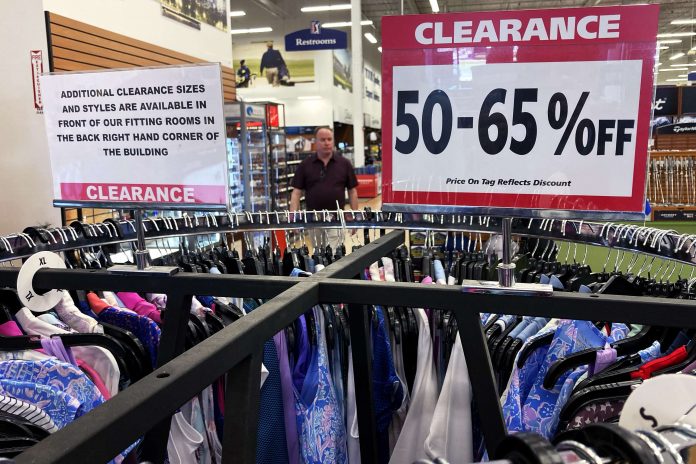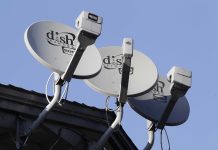
By Paul Wiseman
Associated Press
WASHINGTON (AP) — Inflation in the United States edged up in July after 12 straight months of declines. But excluding volatile food and energy costs, so-called core inflation matched the smallest monthly rise in nearly two years, a sign that the Federal Reserve’s interest rate hikes have continued to slow price increases.
The inflation data the government reported Thursday showed that overall consumer prices rose 3.2% from a year earlier. That was up from a 3% annual rise in June, which was the lowest rate in more than two years. The latest figure remained far below last year’s peak of 9.1%, though still above the Fed’s 2% inflation target.
The Fed, economists and investors, though, pay particular attention to core inflation figures for signs of where price pressures might be headed. From June to July, core inflation remained a tame 0.2%, thanks to easing prices for such items as used vehicles and electronics. And compared with 12 months earlier, core prices rose 4.7% in July, the smallest such increase since October 2021.
“Core prices are moving in the right direction,” said Rubeela Farooqi, chief U.S. economist for High Frequency Economics. “That will be welcome news to (the Fed’s) policymakers.”
Thursday’s price data will be among the key barometers the central bank will weigh in deciding whether to continue raising interest rates. In its drive to tame inflation, the Fed has raised its benchmark rate 11 times since March 2022 to a 22-year high.
Overall prices, measured on a month-to-month basis, rose 0.2% in July; roughly 90% of it reflected higher housing costs. Excluding shelter, Paul Ashworth of Capital Economics calculated that core prices actually fell 0.1% from June to July.
Food prices, which have pressured Americans’ budgets for more than two years, rose a mild 0.2% from June to July. Eggs, meat, beer and dairy products all declined in price, though food is still up 4.9% over the past 12 months. Also falling in July were prices of televisions, audio equipment and pet food.
Energy costs rose just 0.1%. Modestly higher gasoline prices were offset by falling electricity prices.
Used-vehicle prices fell for a second straight month, dipping 1.3% from June and 5.6% from a year ago. Those prices had surged last year as a shortage of computer chips disrupted production of new vehicles, forcing more buyers into the used market. The chip shortage has eased, and new-car production has rebounded, thereby reducing demand for used cars and trucks.
On a three-month basis, consumer inflation was an annualized 1.9% from May through July, the slowest such pace in three years. Some economists prefer the three-month figure because it captures inflation trends with less volatility than the month-to-month figures.
Economists say that in the Fed’s fight to conquer inflation, the easy progress has likely already been achieved. Gasoline prices, for example, though liable to bounce around from month to month, have already plunged from a peak national average of more than $5 a gallon, which was reached in June of last year after Russia’s invasion of Ukraine.
Much of the inflationary surge that began in 2021 was caused by clogged supply chains: Ports, factories and freight yards were overwhelmed by the explosive economic rebound from the pandemic recession of 2020. The result was delays, parts shortages and higher prices. But supply-chain backlogs have eased in the past year, sharply reducing upward pressure on goods prices. Prices of long-lasting manufactured goods actually dipped in June.
Now, the Fed faces a daunting problem: Inflationary pressures in service businesses — restaurants, hotels, entertainment venues and the like — where wages represent a substantial share of costs. Worker shortages have led many of these services companies to sharply raise pay.
Last week, for example, the Labor Department reported that average hourly wages rose 4.4% in July from a year earlier, more than expected. To cover their higher labor costs, companies have typically raised their prices, thereby fueling inflation.
Another factor working against continued declines in year-over-year inflation rates is that prices soared in the first half of last year before slowing in the second half. So any price increase in July would have the effect of boosting the year-over-year inflation rate.
Still, economists caution against reading too much into one month of numbers. Many of them expect inflation to continue trending lower.



















